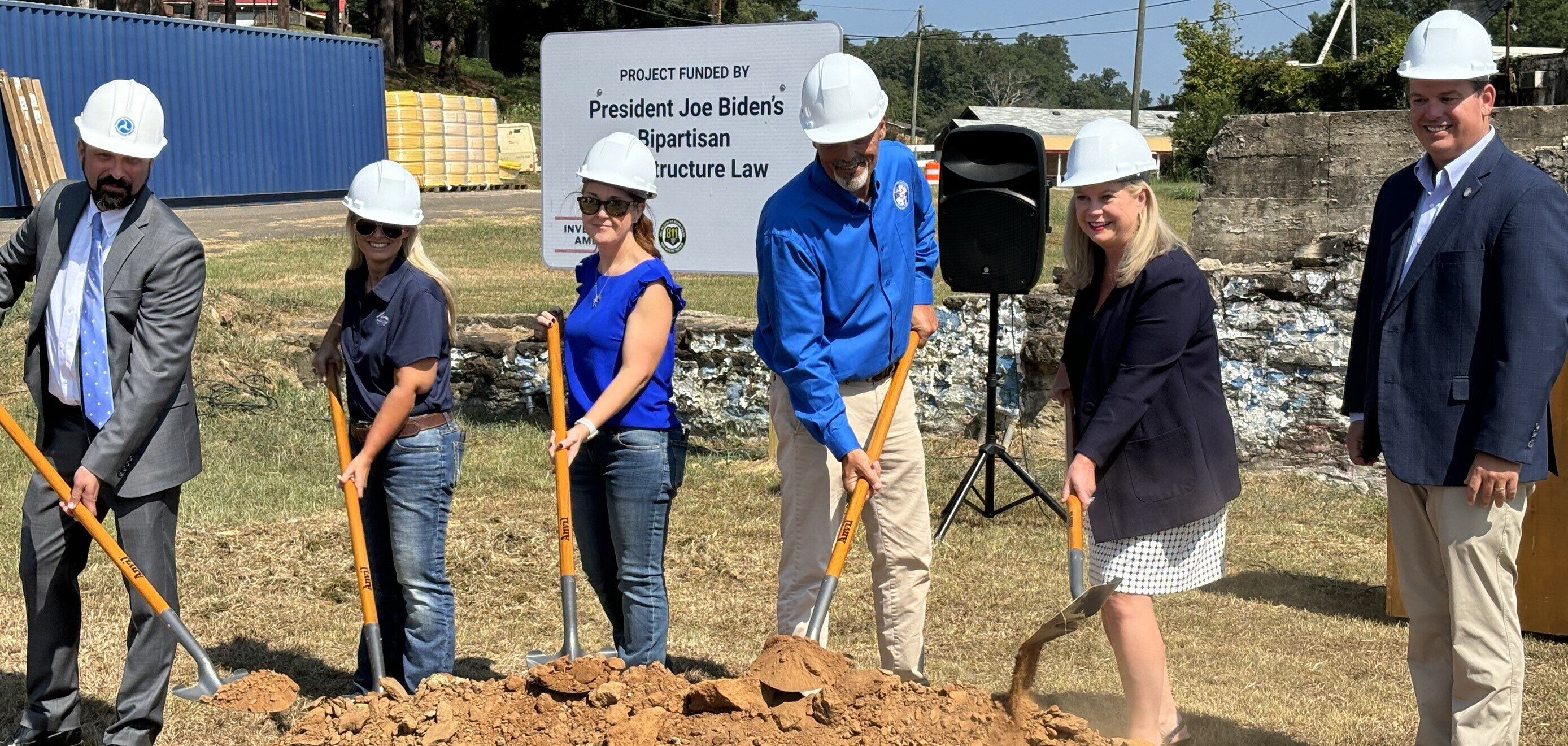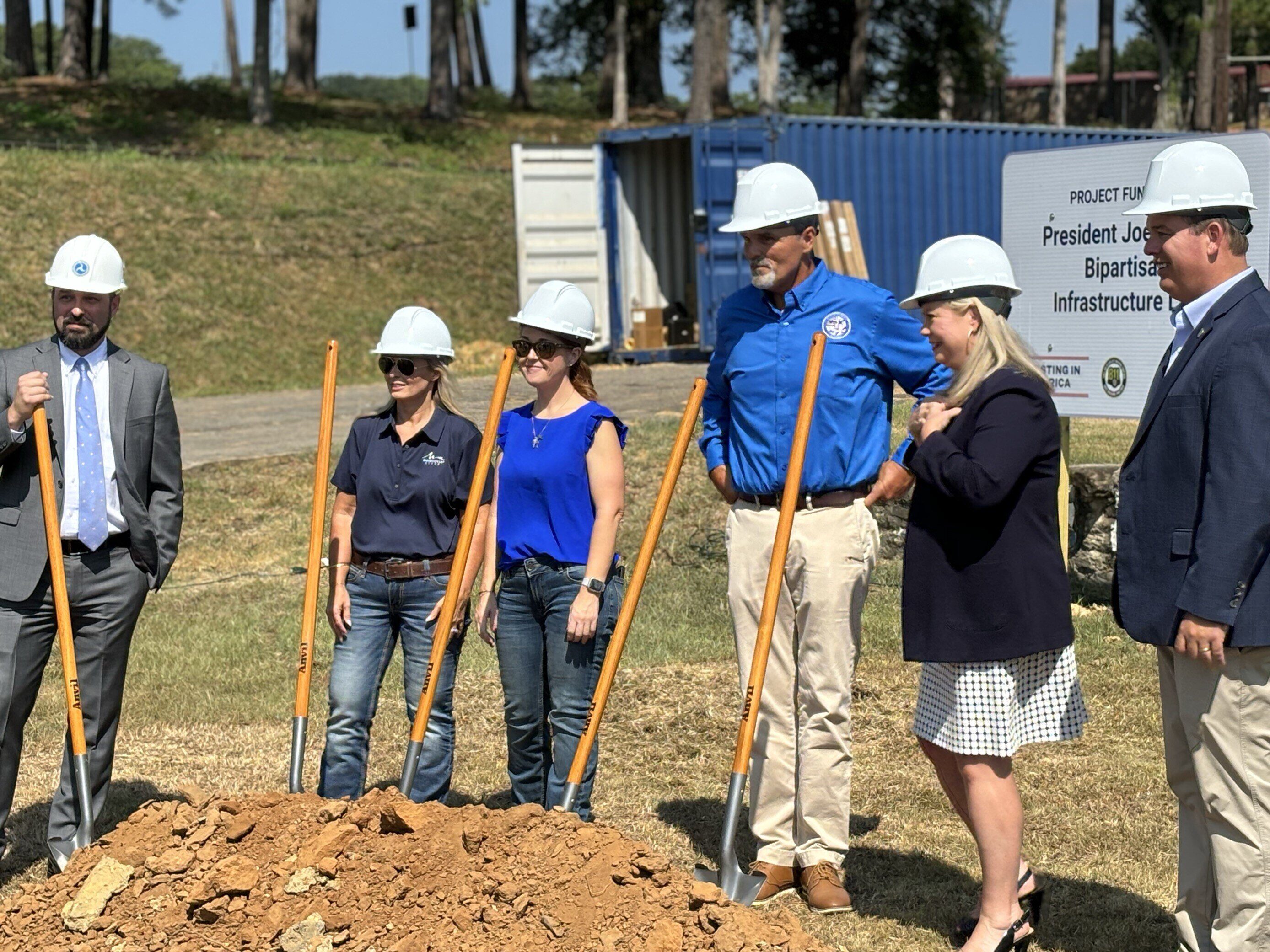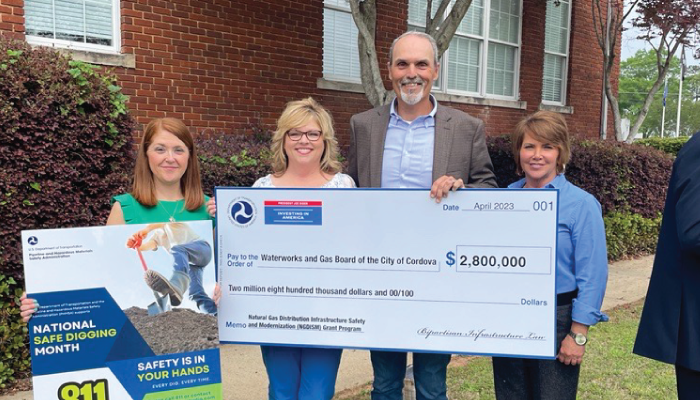Natural Gas Distribution Infrastructure Safety and Modernization Grant Program Support
Are you interested in the PHMSA NGDISM Grant Program? We can help.
Download Our Information Sheet
How We Are Helping Utilities
During the first three years of this program, Magnolia River successfully assisted multiple utilities with grant applications for the Natural Gas Distribution Infrastructure Safety and Modernization Grant Program. Our professional services include:
Grant Application Support
- Developing project budget and scope proposals
- Compiling grant application packages
- Conducting audits and reviewing applications for potential projects
Post-Award Grant Support
- Tier 2 Environmental Assessments
- Engineering Design
- Inspection Services
- GIS As-Builts and Field Data Collection
- Regulatory Compliance Software Solutions
Let us help you secure the funding you need for your infrastructure improvements. Magnolia River has the experience and expertise to guide you through the grant application process.
WANT TO KNOW MORE?
Get In Touch With Us!
You've Won an NGDISM Grant - Now What?
In addition to providing utilities with support for the NGDISM grant application process. Magnolia River can also offer industry-leading support for utilities after they’ve been awarded a grant. In addition to providing industry-leading Engineering, Inspection, GIS, and Software technology-based solutions for our utility clients, we also can help utilities with one of the first requirements after they’ve been awarded an NGDISM grant for a project, the Tier 2 Site-Specific Environmental Assessment.
Tier 2 Environmental Assessments
To maintain compliance with grant requirements and federal regulations, each NGDISM provisional awardee must complete a Tier 2 Site-Specific Environmental Assessment (Tier 2). Tier 2 is a comprehensive approach that involves conducting an in-depth environmental and safety analysis, actively engaging stakeholders, and securing final approval for project funding. Tier 2 is crucial for managing risks and protecting the environment and public health as part of modernizing natural gas infrastructure.
The purpose of Tier 2 is to comprehensively evaluate a project's potential environmental impacts and associated risks. Tier 2 is essential for projects with significant or complex environmental effects, requiring meticulous planning and strategic mitigation. Specifically, the Tier 2 serves the following purposes:
- Detailed Environmental Analysis
- Tier 2 thoroughly examines critical environmental factors, including air and water quality, wildlife habitats, land use, cultural resources, and socioeconomic impacts. This detailed analysis is essential for identifying specific environmental concerns that may arise during the project.
- Risk Identification and Management
- A detailed analysis of potential hazards and risks—such as chemical spills, pipeline leaks, and other safety concerns—is a critical component of Tier 2. Early identification of these risks enables the development of effective mitigation strategies.
- Regulatory Compliance
- Ensuring compliance with federal, state, and local environmental regulations, including those mandated by the National Environmental Policy Act (NEPA), is a critical aspect of Tier 2. Compliance with NEPA is required for projects seeking approval or funding from federal agencies.
- Mitigation Planning
- Planning for mitigation measures to reduce or eliminate adverse environmental impacts is a critical component of Tier 2. Based on the findings of Tier 2, mitigation planning may involve modifying project designs, implementing protective strategies, or conducting ongoing monitoring.
- Informed Decision-Making
- The detailed information provided by Tier 2 equips decision-makers with the data they need to make informed choices about whether a project should proceed, be modified, or be rejected based on environmental and safety implications.
PHMSA's review of a provisional awardee's Tier 2 is a rigorous and comprehensive process designed to ensure that pipeline projects are developed responsibly, protecting the environment and complying with all regulatory requirements. Through detailed technical reviews, interagency coordination, public involvement, and ongoing monitoring, PHMSA thoroughly evaluates potential environmental impacts and ensures they are appropriately mitigated.
PHMSA uses the information from Tier 2 and other gathered data to determine whether any adverse or potentially significant environmental impacts are likely to occur and whether any positive or beneficial effects will occur. This National Environmental Policy Act (NEPA) process must be completed before any construction activity can begin.
How Magnolia River Can Help
In support of Tier 2, PHMSA requires the inclusion of maps to aid in planning, assessment, and decision-making by providing detailed information for urban planning, environmental protection, hazard preparedness, and transportation infrastructure. These maps are essential for evaluating environmental impacts, ensuring regulatory compliance, and supporting risk assessment and mitigation. They also play a critical role in stakeholder engagement, helping to communicate and address the environmental impacts of projects involving pipelines and hazardous materials, ensuring responsible project execution in line with regulatory requirements.
Magnolia River's GIS Business Unit uses Esri software to create maps to support detailed environmental assessments, hazard analyses, and safety and environmental protection planning. These detailed maps are tailored to the specific project to meet the grant requirements and associated regulatory frameworks. The types of maps that may be required include Air Quality, Water Resources, Biological Resources, Cultural Resources, and Environmental Justice.


Background
On November 15, 2021, President Biden signed the Bipartisan Infrastructure Law which is the most significant investment in our nation’s infrastructure in more than half a century. This includes the Pipeline and Hazardous Materials Safety Administrations (PHMSA) first ever infrastructure grant program. The legislation designated $200 million a year in grant funding with a total of $1 billion in grant funding over the next five years.
The grant funding is to be made available to a municipality or community owned utility (not including for-profit entities) to repair, rehabilitate, or replace its natural gas distribution pipeline systems or portions thereof or to acquire equipment to (1) reduce incidents and fatalities and (2) to avoid economic losses.
In its debut year, PHMSA allocated nearly $196 million to utilities, supporting 37 projects across 19 states. Building on this success, Year 2 saw a remarkable increase, with PHMSA awarding $392 million to support 130 projects nationwide. Similar funding is expected for Year 3, maintaining the program's momentum in supporting critical infrastructure improvements.
Additional Services Provided With Our Grant Support Include:.
Review of existing system data including existing information on mains, services, leak history, etc.
Research and analyze available GIS data sources to support grant submission requirements
Evaluation of proposed projects or programs against anticipated grant program criteria
Audit of proposed projects or programs with existing Federal programs reporting requirements (DIMP, SHRIMP, etc.)
Comprehensive project or program cost estimation using Magnolia River’s custom pricing tools
Administrative and technical support for grant submission processes
We Can Win the Next One for You




Why Magnolia River?
Magnolia River is an industry-leading solutions provider specializing in professional services, field services, and software with a focus on serving clients in the utility sector. Magnolia River’s primary business units: Engineering, Inspection, GIS, and GeoCurrent provide a host of solutions—from front-end engineering design to distribution & transmission inspection to technology-based geospatial solutions.
We have over 20+ years of experience supporting APGA and public gas utilities. We support over 100 public gas utilities on annual basis across several service offerings, including: Engineering, Pipeline and Service Line Inspection, GIS, Land Survey, Software and Leak Survey. Let us use that knowledge and experience in helping you plan, prepare, and win these Federal grants to support your gas system.

